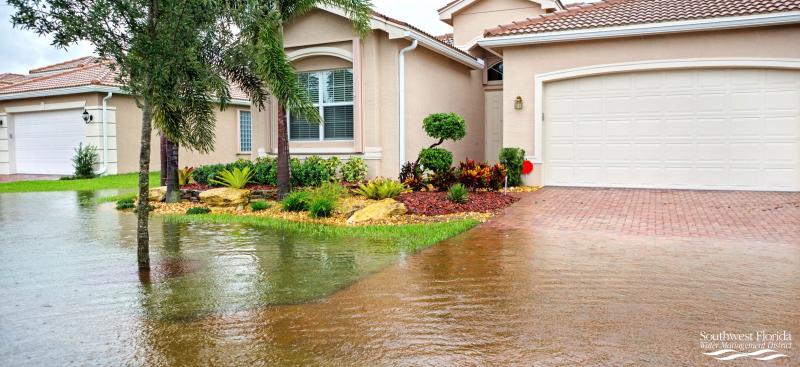Are stormwater systems designed to withstand a 100-year flood event?
In some circumstances, permitted stormwater systems are designed to manage a 100-year, 24-hour rainfall event. In what is called a “closed” drainage basin, stormwater ponds must not only limit the rate of discharge to the pre-development 25-year, 24-hour rate, but they must also be designed to limit the volume of discharge to the pre-development 100-year, 24-hour runoff volume. In most other circumstances, ponds are designed to limit the 25-year, 24-hour discharge rate, only.
Hurricane Milton — It is important to recognize that all these criteria were well exceeded during Hurricane Milton. In addition, 2024 rainfall depth totals exceeded 80” in some of the basins most impacted. The average amount of yearly rainfall for much of our District is approximately 52– 54.” These higher wet season rainfall amounts led to a very saturated antecedent, or pre-storm, condition. Many lakes, rivers, wetlands, ditches and other surface water storage areas were close to, or even at capacity, prior to the arrival of Hurricane Milton. Even well-designed and maintained stormwater management infrastructure was simply overwhelmed by the volume and intensity of rainfall that occurred during the hurricane.
Is the construction of new subdivisions causing flooding in other established neighborhoods?
The District’s stormwater regulation program was founded in October 1984. Prior to that, many neighborhoods and communities were developed without flood control regulations with some homes built lower than the 100-year flood elevation. That’s why older neighborhoods tend to flood more frequently than newer neighborhoods that are required to consider the most accurate and up-to-date flood data and to be built to higher standards. The Environmental Resource Permit (ERP) program also requires that all new developments incorporate stormwater management systems that must be designed, based on the criteria above, to NOT cause any adverse water quantity or flooding impacts onsite, or to offsite and adjacent lands.
Who is responsible for maintaining drainage canals?
Typically, local governments have the primary responsibility of ensuring that publicly-owned pipes, roadway drainage systems, ditches and canals are adequate, clean and functioning properly. Maintenance of ditches, canals and other drainage infrastructure including culverts and pipes located on private property is the responsibility of the property owner. For properties that were developed and have a valid Environmental Resource Permit (ERP), maintenance is the responsibility of the assigned operation and maintenance entity. Visit the District’s Who to Contact for Flooding and Drainage Issues webpage to learn more.
Who is responsible for maintaining stormwater ponds?
After developers complete construction of permitted stormwater systems in residential areas, the permit and the legal responsibility for maintaining the systems are typically passed on to a homeowner’s, condominium owner’s or property owner’s association. The maintenance and associated expenses of the system become the responsibility of the association. Visit the District’s website to learn more about stormwater systems in your neighborhood.

